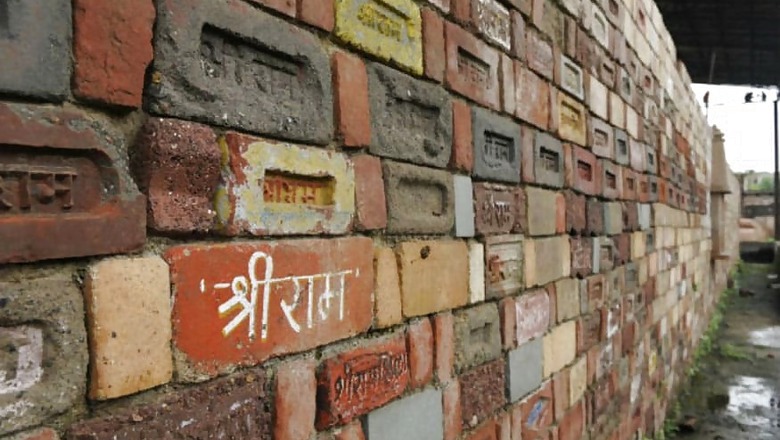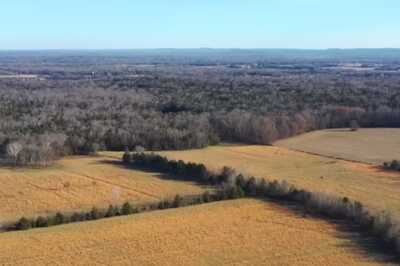
views
Nothing signifies more adulation and reverence for Lord Rama, one of the foremost icons of cultural nationalism in this ancient land of Bharat since ages, than the festival of Vijayadashami.
For millions of Bharatiyas, Lord Rama’s life is seen as a life of holy compliance, purity, simplicity, self-sacrifice and renunciation. Millions have drawn inspiration form the story of his life across the globe and continue to do so.
However, a section of people has often raised questions about the existence of Lord Rama, terming him as more of a myth rather than a historical figure.
It is through contemporary literature that the rich cultural traditions of a nation are preserved and protected. Of all the ancient Indian literature, the most significant is Ramayana, an epic that was first recited by Valmiki. It has had long-lasting and greatest influence on the Indian culture and values. In the Indian context, the epics are considered to be records of the mind and spirits of our forefathers who want us to lead a good, fulfilling and meaningful life.
We have an exceptional blend of believers and non-believers carrying their beliefs about Lord Rama which have often been at variance. There have been astronomers, historians, archeologists and foreign travellers who have identified and clearly corroborated the dates, incidents and geographical places that have been mentioned in the Ramayana.
While dismissing the contention that Ramayana is just a literary piece, Ralph T.H. Griffith, who translated the Valmiki’s Ramayana, The Ramayan of Válmíki (published in 1895), asks, “How could an epic so dear in India to the memory of the people, so deeply rooted for many centuries in the minds of all, so propagated and diffused through all the dialects and languages of those regions, which had become the source of many dramas, which are still represented in India, which is itself represented with such magnificence year after year and to such crowds of people in the neighborhood of Ayodhya, a poem which at its very birth was welcomed with such fervour as the legend relates, that the recitation of it by the first wandering rhapsodists, has consecrated and made famous all the places visited by them, and where Rama made a longer or shorter stay, how I ask, could such an epic have been purely allegorical?”.
Gasper Gorressio, an Italian indologist (1808-1891) who is best known for his translation of Valmiki’s Ramayana, opined that some events must have happened in the distant past, the memory of which has so impressed itself indelibly on the fancies of the Hindus that there is no possibility of the story ever dying until some geological alterations of the features of the country come to pass.
F. E. Pargitter observed in The Geography of Rama’s Exile (1894) that “the geographical knowledge revealed in the epic could hardly have been obtained except by actual visit to these places by some persons.”
In the year 1973, during the All India Seminar on Ramayana held at Trivandrum, a book on ‘Sri Rama Pada Yatra’ was brought out by Sri V.D. Ramswami. It contains maps describing his trek in the forests and places visited by Rama during his life. Even the flora and fauna as described in Valmiki’s Ramayana were traced and found to be accurate.
Major Forbes also wrote a book, titled Eleven Years in Ceylon, which gives a complete account of the various sites in Sri Lanka which are mentioned in the epic.
Pushkar Bhatnagar, author of the book Dating the Era of Lord Rama, observes, “Valmiki, who wrote the Ramayana, was a contemporary of Rama. While narrating the events of the epic, he has mentioned the position of the planets at several places.” He explains that by using recent planetary software, it has been possible to verify that these planetary positions actually took place precisely as specified in the Ramayana. These were not just stray events, but the entire sequence of the planetary positions as described by Valmiki at various stages of Rama’s life which can be conveniently verified today as having taken place.
Bhatnagar further explained: “This information is significant, since these configurations do not repeat for lakhs of years and cannot be manipulated or imagined so accurately, without the help of a sophisticated software. The inference that one can draw is that someone was present there to witness the actual happening of these configurations, which got recorded in the story of Rama.”
Be it finding a Vishnu Hari inscription in the British era archeological studies to Archeological Survey of India excavations post-independence in Ayodhya and at other places, it is clear that Lord Rama was a historical figure and not a mere mythological figure.
Millions of people feel reciprocation from Lord Rama whenever they devote themselves in reverence to reading or hearing the Ramayana or go to one of the temples dedicated to him. The devotion and reciprocation has spread throughout the world through celebration of Ram and his life. It is time to stop doubting the existence of the most revered cultural icon of Bharat and learn from his life and times in both letter and spirit.
(The author is PhD in Sociology and senior fellow with Vichar Vinimay Nyas. The views expressed are personal.)



















Comments
0 comment